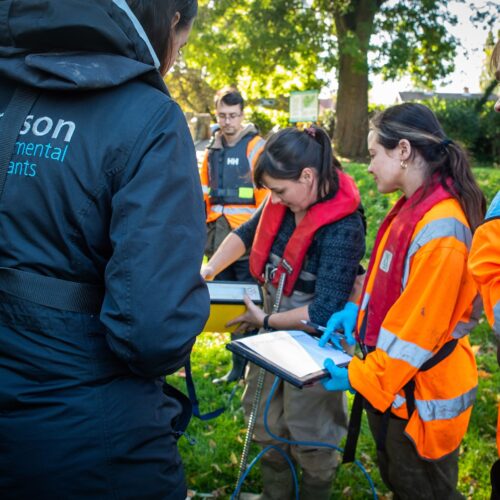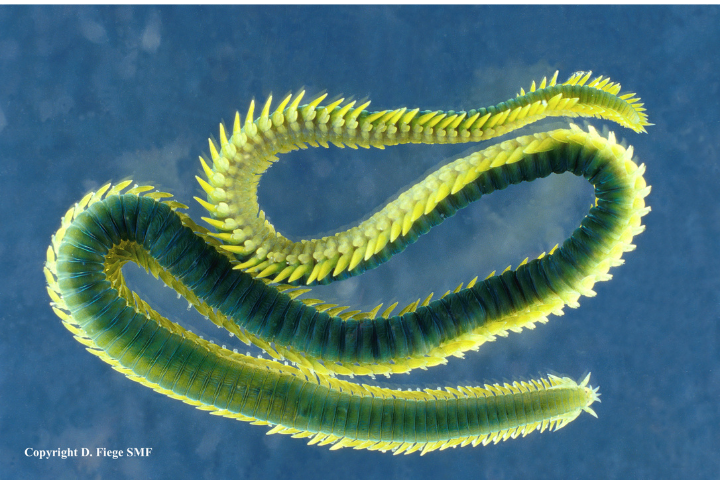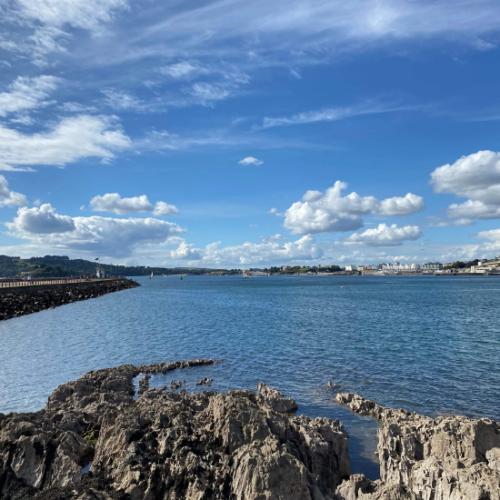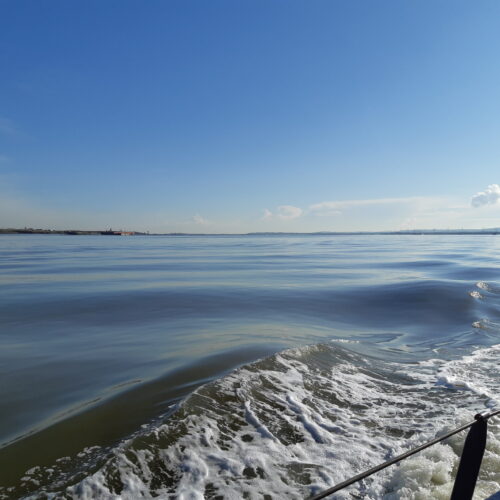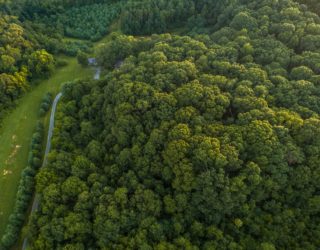Are you aware that marine scientists get euphoric when coming across worms? Especially, when a particular worm is an architect, creating a complex network of burrows and tunnels beneath the ocean floor. Dwelling in the depths of the North-East Atlantic, distributed widely around the southern and western coasts of England and Ireland, and in multiple Scottish sea lochs, the volcano worm Maxmuelleria lankesteri is iconic in fine muddy environments. This astonishing animal belongs to the small group of spoon worms, or ‘Echiura’, which come in different sizes and are found throughout the ocean, ranging from shallow waters to the abyss. (1, 2, 3).

Did you know?
The body of Maxmuelleria lankesteri is rather fragile and, much like other echiurans, consists of a main cylindrical, sac-like part and a thin, strap-shaped proboscis used for feeding (Figures 1 & 2). The worm can reach lengths of 18 cm in its contracted form and inhabits a dual opening “U”-shaped burrow which can extend between 1-2 m in length. As a typical deposit-feeder, the animal extends its proboscis outside the burrow to gather sediment enriched with organic matter. The collected sediment is then ingested and any non-organic particles are expelled outside the opposite burrow opening, which creates the notable miniature volcanoes on the muddy seabed. These mounds can reach heights of 30 cm and have given the species its common name. (1, 2, 4, 5).
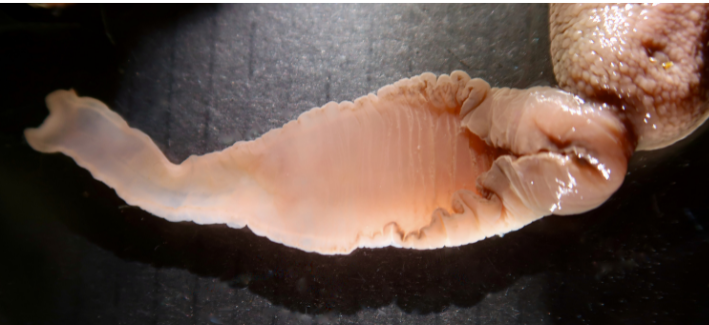
Another mind-blowing feature is that these worms share similar characteristics to mythical creatures we are all familiar with: Vampires! Allow me to indulge your curiosity further. When alive, M. lankesteri is intensely green coloured, with its colour originating from a pigment named bonellin. However, if this pigment is exposed to sunlight, it releases oxygen free radicals. These highly reactive molecules are harmful to the integument, and just like vampires, M. lankesteri disintegrates and perishes under illumination. (1,3).
Why is this worm important?
Large burrowing animals (also termed ‘megafauna’), such as M. lankesteri, are important agents of bioturbation (2, 8). Their burrowing and feeding activities modify the sediment structure and geochemistry. This increases the availability of nutrients and oxygen for other occupants within the sediment (6, 7). Other members of this deep-burrowing community include the thalassinidean shrimp Jaxea nocturna, which is known to live in and modify the echiuran’s burrow (4, 9). Given the importance of their ecological function, it is no surprise that the animals are firm favourites of the marine scientific community.
Interest in M. lankesteri has recently renewed given its presence in the Irish Sea, near areas receiving discharges from a nuclear processing plant. Historical surveys indicated that M. lankesteri was a significant factor in the downward transport of radionuclide-contaminated sediment particles to 0.5m depths. (10, 11). Because of this, more research efforts have been deployed to further understand the animal’s biology. However, given its deep-burrowing habit and structural fragility, M. lankesteri is difficult to capture intact (1).
In 2022 our marine team at Thomson Environmental Consultants undertook a benthic survey off the coast of Cumbria within the West of Walney Marine Conservation Zone (MCZ) for the North West Wildlife Trusts. This MCZ covers an area of 388 km2 of seabed and was designated in 2016 to protect the vulnerable ‘Sea-Pen and Burrowing Megafauna Communities’ (12, 13). The area was under threat from extensive fishing operations, which re-suspend sediment and reduce the functioning capacity of burrowing megafauna (14, 15). The aim of our survey was to assess the recovery of the benthic fauna and our team was excited to encounter M. lankesteri in several of the box cores deployed to access the deeper sediment (Figure 3).
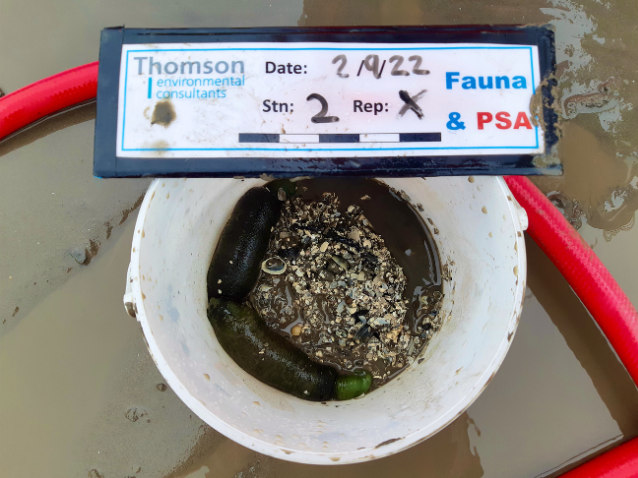
References
1. Hughes D.J., Ansell A.D., Atkinson R.J.A. & Nickell L. A. (1993). Underwater television observations of surface activity of the echiuran worm Maxmuelleria lankesteri (Echiura: Bonelliidae). Journal of Natural History, 27: 219-248.
2. Hughes D.J., Ansell A.D. & Atkinson R.J.A. (1996). Distribution, ecology and life-cycle of Maxmuelleria lankesteri (Echiura: Bonelliidae): a review with notes on field identification. Journal of the Marine Biological Association of the United Kingdom, 76: 897-908.
3. Whyevolutionistrue (2021) Readers’ wildlife photos, Why Evolution Is True. Available at: https://whyevolutionistrue.com/2021/12/13/readers-wildlife-photos-1490/ (Accessed: March 6, 2023).
4. Nickell L.A., Atkinson R.J.A., Hughes D.J., Ansell A.D. & Smith C.J. (1995). Burrow morphology of the echiuran worm Maxmuelleria lankesteri (Echiura: Bonelliidae) and a brief review of burrow structure and related ecology of the Echiura. Journal of Natural History, 29: 871-885.
5. Hughes D.J., Atkinson R.J.A. & Ansell A.D. (1999). The annual cycle of sediment turnover by the echiuran worm Maxmuelleria lankesteri (Herdman) in a Scottish sea loch. Journal of experimental marine biology and ecology, 238(2), 209-223.
6. Hughes D.J., Hatton A.D. & Nickell L.A. (2004). Do biogenic sulphur compounds in phytodetritus act as cues for deposit-feeder activity? Field experiments and observations on the echiuran worm Maxmuelleria lankesteri. Journal of experimental marine biology and ecology, 313(1): 175-189.
7. Shull D.H. (2010). Bioturbation. Encyclopedia of Ocean Sciences. 395-400.
8. Atkinson R.J.A. (1986). Mud-burrowing megafauna of the Clyde Sea area. Proceedings of the Royal Society of Edinburgh, 90(13): 351-361.
9. Pervesler P. & Dworschak P.C. (1985). Burrows of Jaxea nocturna Nardo in the Gulf of Trieste. Senckenbergiana Maritima, 17: 33-53.
10. Williams S.J., Kirry R., Smith T.J. & Parker W.R. (1981). Sedimentation studies relevant to low-level radioactive waste disposal in the Irish Sea, Part II. Seabed morphology, sediments and shallow sub-bottom stratigraphy of the eastern Irish Sea, Institute of Oceanographic Sciences, Wormley, Surrey, Report No. 120.
11. Kershaw P.J., Swift D.J., Pentreath R.J. & Lovett M.B. (1984). The incorporation of plutonium, americium and curium into the Irish Sea seabed by biological activity. Science of the Total Environment, 40(1): 61-81.
12. Marine conservation zones (2019) JNCC. Available at: https://jncc.gov.uk/our-work/marine-conservation-zones/ (Accessed: March 6, 2023).
13. Mitchell P., McIlwaine P., Arosio R., Hogg O. & Clare D. (2020). West of Walney Marine Conservation Zone Monitoring Report No. 21. Department for Environment, Food and Rural Affairs (Defra).
14. Bradshaw C., Jakobsson M., Brüchert V., Bonaglia S., Mörth C., Muchowski J., Stranne C. & Sköld M. (2021). Physical Disturbance by Bottom Trawling Suspends Particulate Matter and Alters Biogeochemical Processes on and Near the Seafloor. Frontiers in Marine Science, 8: 683331.
15. Linders T., Nilsson P., Wikström A. & Sköld M. (2018). Distribution and fate of trawling-induced suspension of sediments in a marine protected area. ICES Journal of Marine Science, 75(2): 785-795
Photographic credits
Figures 1 & 2: Dr Ruth Barnich, Thomson Environmental Consultants
Figure 3: Dr Bruce Mostert, Thomson Environmental Consultants.



